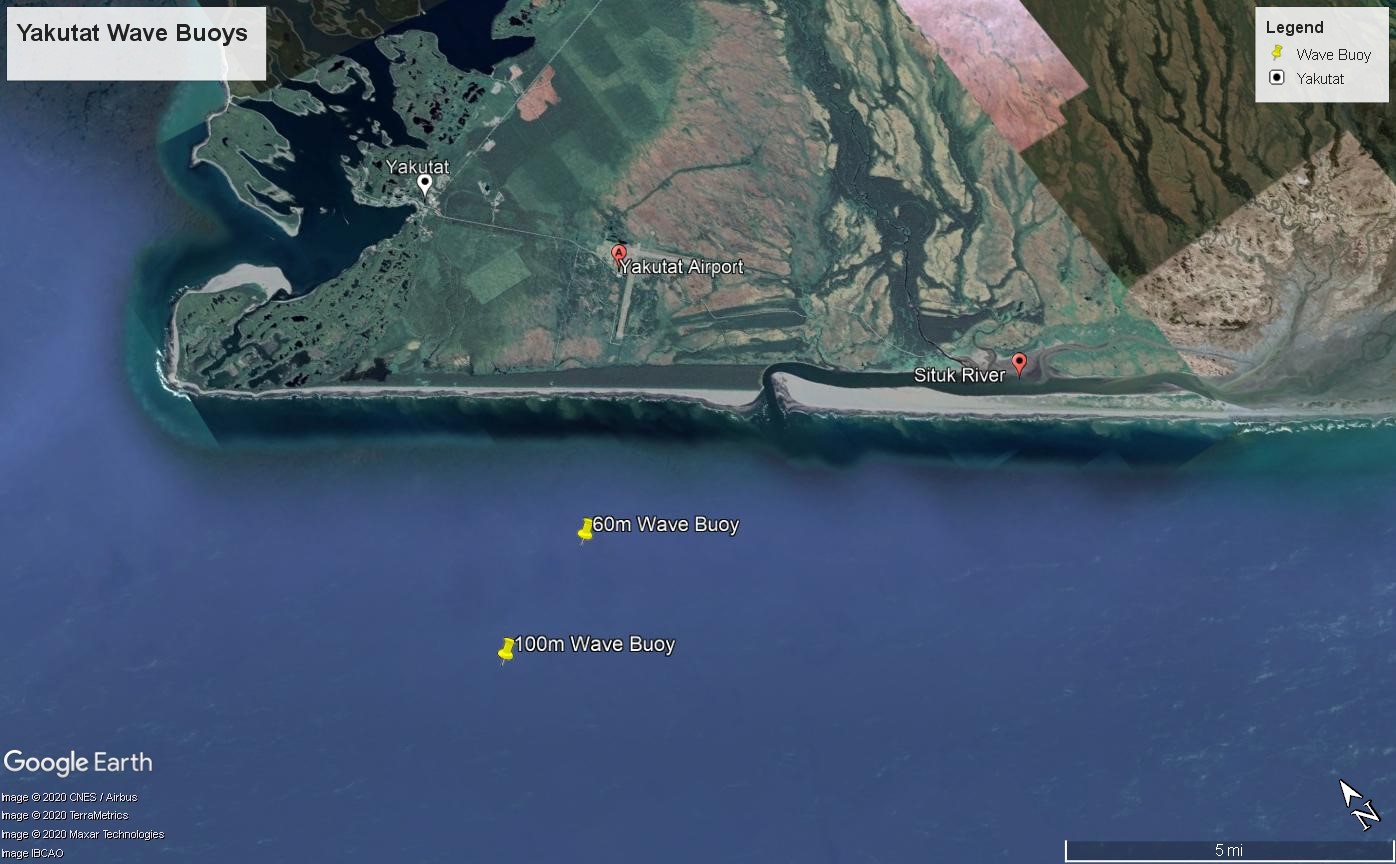Small Buoy Transmits Real-Time Wave Data from Cannon Beach

A Sofar Ocean wave buoy was deployed for ACEP researchers last month off Cannon Beach in Yakutat, Alaska. The deployment was for a project on improving real-time forecasts of wave energy.
The deployment was conducted by a local commercial fisherman, Jonathan Pavlik, from his boat, the F/V Morgan. Pavlik’s knowledge of the area and input on gear guided Pacific Marine Energy Center’s decision on where to safely deploy the buoy. Data from the buoy is available in real-time from the Sofar Dashboard.
The buoy is very small (16.4 by 12.2 inches) and lightweight compared to Coastal Data Information Program buoys. Its low cost and small size means it can be deployed at substantially less cost than the larger buoys. This makes the buoys especially valuable to researchers and emerging industries such as wave energy. The buoys transmit their data once an hour via satellite for tracking significant wave height, peak and mean period, direction and spread in near real-time.
This buoy was placed at a depth of 120 meters. A second Sofar Ocean wave buoy deployed last fall, in 60 meters of water, continues to stream data. These data sets will be combined with data from moored sensors deployed from 2018-2019 to provide a detailed look at the wave resource in the region.
Funding for the research is provided by the Bureau of Ocean Energy Management’s “Yakutat Wave Energy Project,” U.S. Army Engineering Research and Development Center’s “Secure and Resilient Power Generation in Cold Region Environments,” University of Hawaii – Office of Naval Research’s “Asia Pacific Research Initiative for Sustainable Energy Systems 2015,” and Sandia National Labs’ “Overcoming Wave Energy Converter Grid Integration Challenges: Coupling Wave Forecasting, WEC Array Controls, and Power Production.”
A Sofar Ocean buoy was deployed off Cannon Beach last month. Google Earth image provided by Stephanie Jump.


